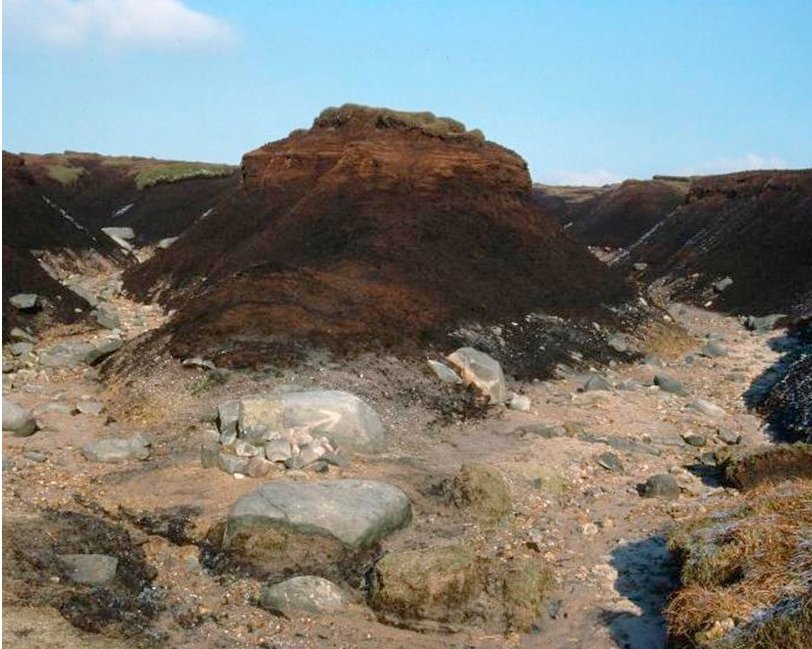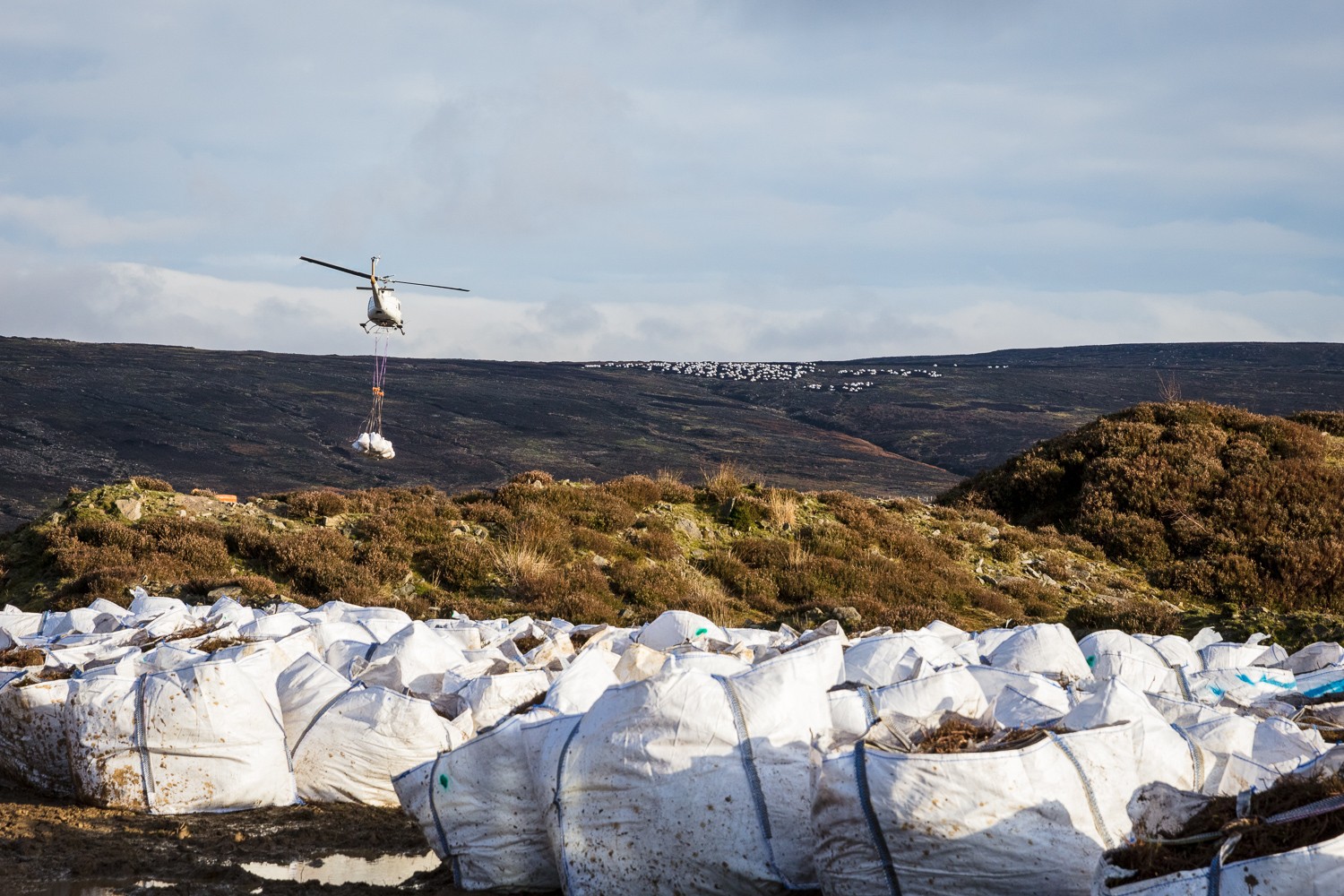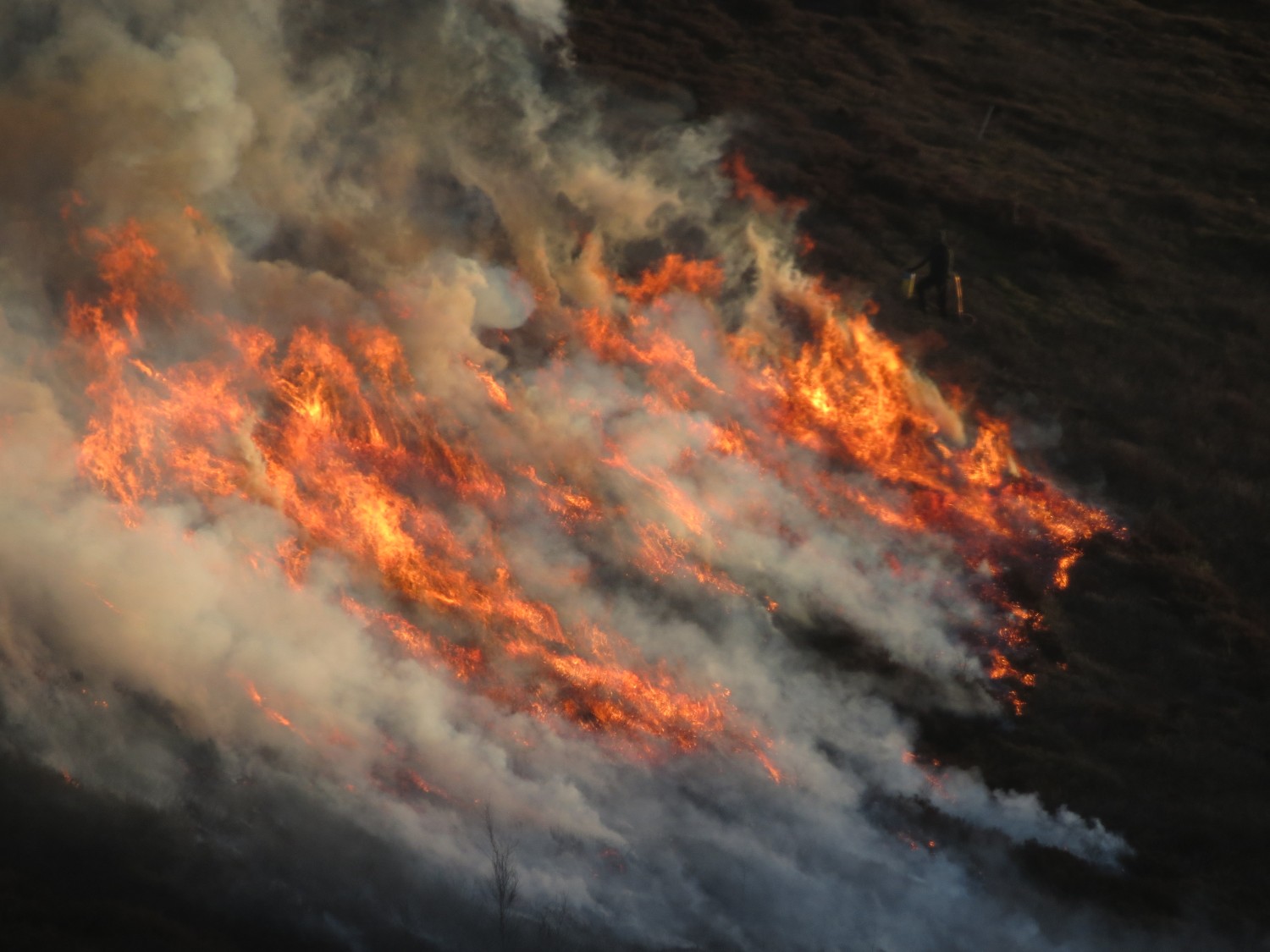Tackling climate change
Blanket bogs play a vital role in tackling climate change
They absorb carbon from the atmosphere and store it as peat
By storing this carbon in the ground, it is not released into the atmosphere, where it would add to the greenhouse effect and contribute to global warming
Blanket bogs are worth protecting because they are huge stores of carbon.
Peatlands are the UK's largest carbon store
In the Peak District alone, 20 million tonnes of carbon is stored in the peat. Healthy peatlands are able to store more carbon than they release, making them important carbon sinks. Due to the acidic and water-logged conditions present in blanket bogs, plants decay very slowly. This results in the slow but steady build-up of peat, which locks in the carbon. Peat depth increases at a rate of about 1mm per year.
Blanket bogs in poor condition release more carbon than they take in.
Without plant cover they have reduced ability to take in and store carbon. Peat is exposed to air and the elements so it is susceptible to erosion and decomposition and is lost from the moors. This can happen at a rate of up to a metre of peat depth per year. Huge amounts of carbon that were previously stored in the peat are released into the atmosphere and rivers. This is why damaged peatlands contribute greatly to greenhouse gas emissions.
By revegetating the areas of damaged blanket bogs, we aim to:
- halt the erosion of peat from the moors
- reduce the loss of carbon
- increase the amount of carbon absorption
- turn the damaged carbon sources back into carbon sinks

By restoring damaged peatlands, we initially halt the loss of carbon
Over time, as the condition of the bog improves, (and sphagnum mosses establish) the moors will start taking carbon in. Peatlands can contain more than twice the amount of carbon stored in forests, due to the deep layers of peat that are gradually built.
Our work can effectively increase the carbon uptake, helping to fight climate change
The revegetation and conservation of peatlands allows us to reduce erosion, enhance the quality of the landscape and transform a source of carbon into a sink. The impact this can have on the carbon in the Peak District is the equivalent of planting 15,000 broadleaved trees annually.
By calculating how much carbon is being taken in and how much is being lost, we are also able to assess the impact of land management practices in terms of carbon regulation.
In addition, the moorland fires and drought conditions have shown how the upland landscape needs to be in the best ecological condition to withstand the shocks and stresses of a changing climate in order to deliver positive benefits for the downhill, downstream and downwind communities in places such as Manchester.

